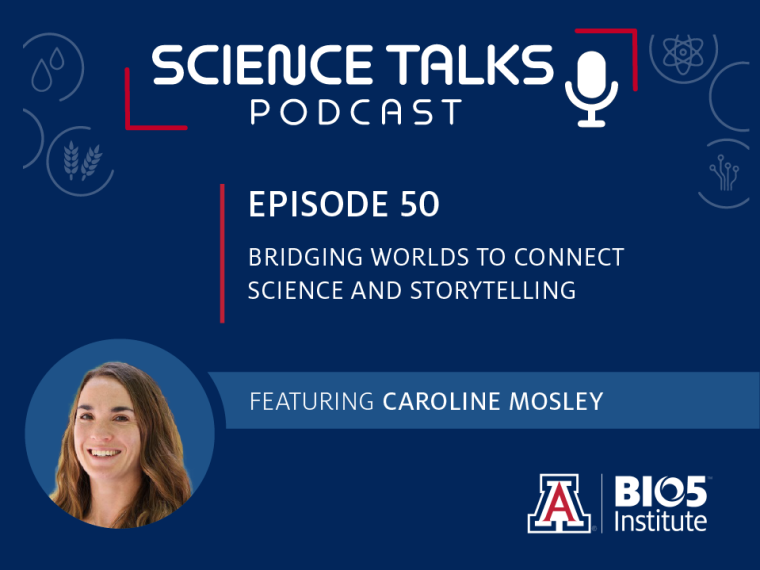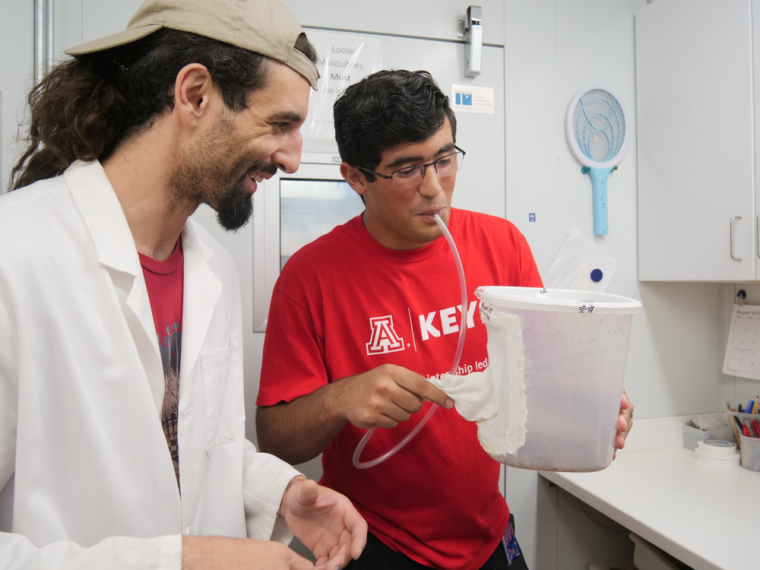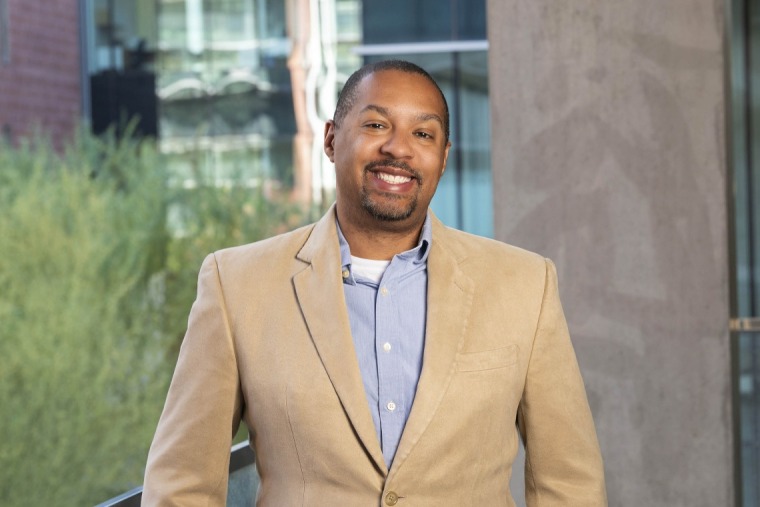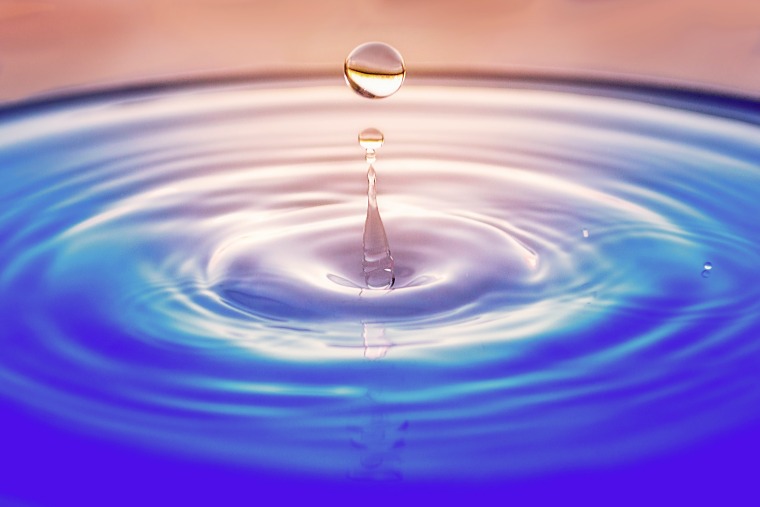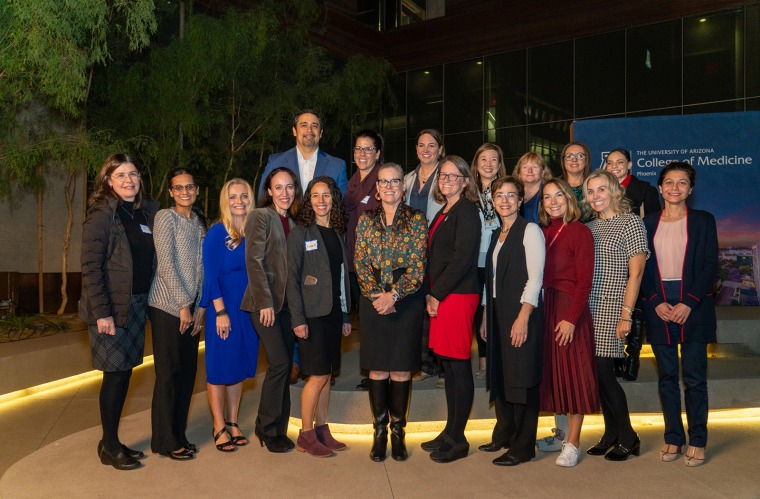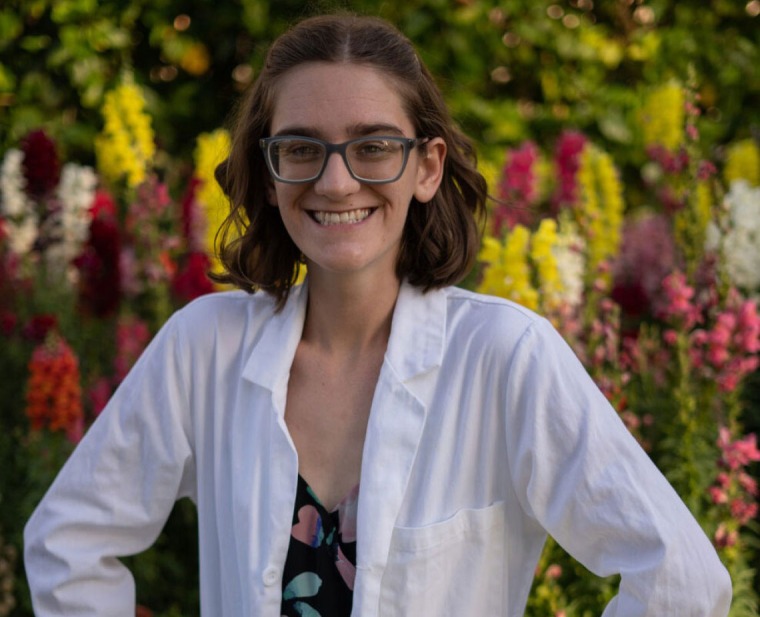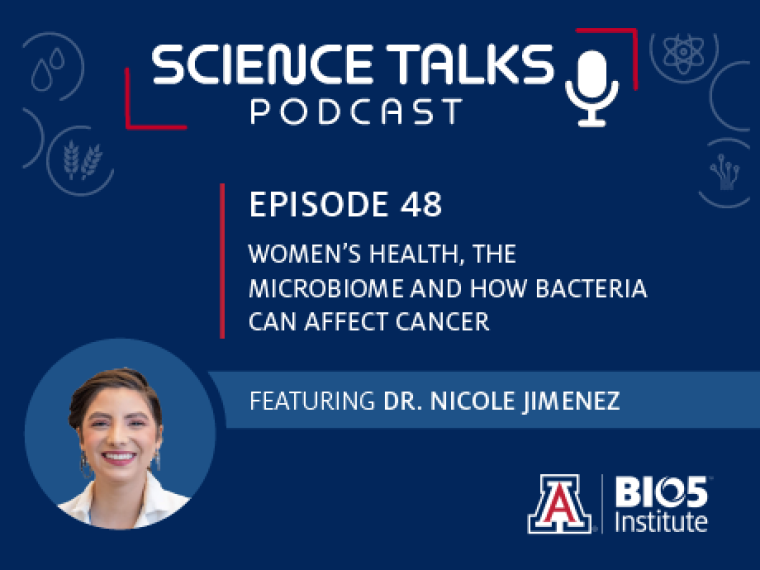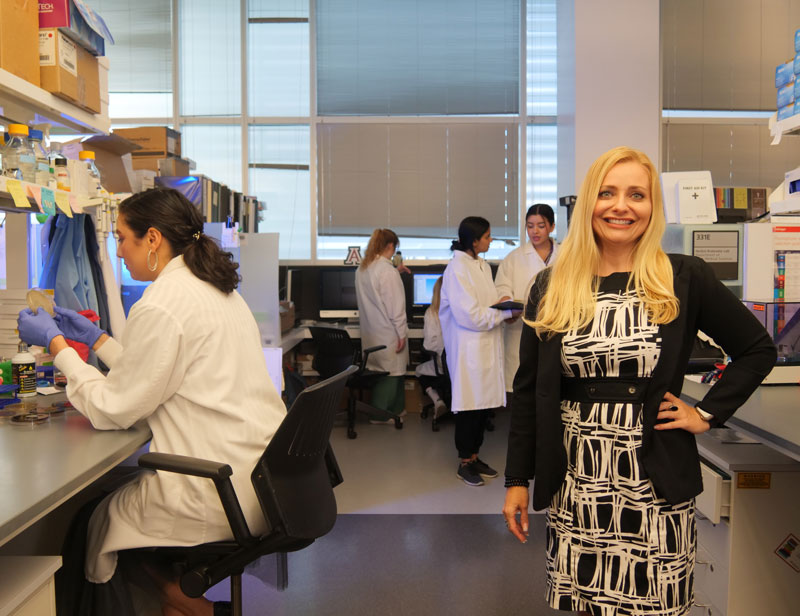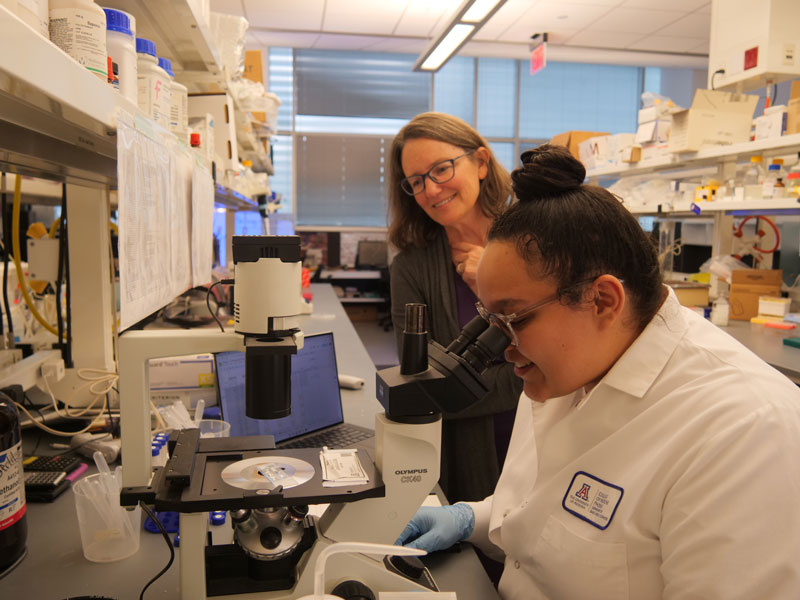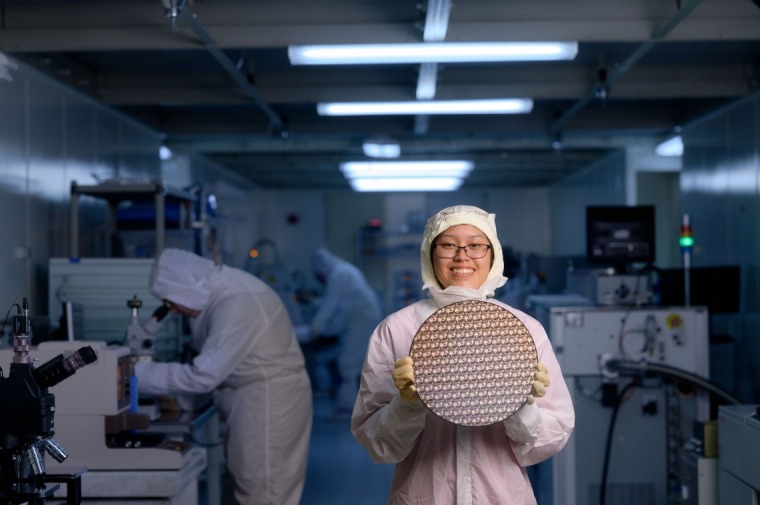Arizona community gets exclusive access at Behind BIO5 event
Over 100 community members received exclusive access to impactful research at the BIO5 Institute for the inaugural Behind BIO5: Meet the Scientists.
From immersive research lab tours and research demonstration tables to engaging fireside chats and inspiring poster presentations, attendees learned about pioneering work driving progress in nutrition, cancer prevention, precision medicine, aging, and beyond.
“This event gave us the opportunity to see labs, meet student scientists, and hear firsthand from the researchers about the many programs and groundbreaking research and development being accomplished at the University of Arizona,” said Bonnie Allin, Critical Path Institute board member. “BIO5 is a gem in which the community should take great pride."
The goal of the evening was to provide a personalized journey through BIO5’s state-of-the-art facilities and allow guests to engage with BIO5 researchers directly. With 380 researchers from 18 colleges and over 70 departments across the university, the BIO5 Institute is a powerhouse of bioscience discovery and innovation.
Meeting BIO5 scientists
Attendees witnessed science in action with tours to over 18 labs and core facilities in the Thomas W. Keating Bioresearch and Biosciences Laboratory Building. While training the next generation of scientists, BIO5 focuses on moving innovations that improve human and environmental health out of the lab and into the community.
“As the voice of business leaders in the region, the Southern Arizona Leadership Council (SALC) fully supports and appreciates the high-impact research and innovation occurring at the BIO5 Institute that contributes to a thriving knowledge-based economy,” said Allen Kinnison, SALC vice president. “BIO5’s contribution to scientific research is significant and can play an important role in the region’s economic development.”
Fireside chats — including engineers, physician-scientists, and computational researchers — invited researchers from across the university campus. This series of focused conversations explored the people behind the core five disciplines represented by BIO5 — agriculture, engineering, medicine, pharmacy and science.
“Our work not only pushes the boundaries of science but also fuels Arizona’s agriculture and healthcare sectors with improvements in crop resilience, disease treatment, and health monitoring,” said Jennifer Kehlet Barton, director of the BIO5 Institute. “Through events like Behind BIO5, we open our doors to the community and stakeholders, showcasing the groundbreaking research happening at the university.”
Several research groups affiliated with BIO5 set up interactive tables to give one-on-one research demonstrations. For example, guests could better understand brain health from the Brain Imaging Center, learn about sequencing technology from the Arizona Genomics Institute, explore microbiology with Paul Carini, associate professor of environmental science, or see how plant root architecture can solve agricultural challenges with Alexander Bucksch, associate professor of plant science.
Creating connection for researchers
Events like Behind BIO5 not only make research accessible to guests, but also fosters interdisciplinary collaboration between scientists.
"Behind BIO5 was beneficial to me in that it quickly reacquainted me with both the richness and breadth of the tapestry of expertise at BIO5 that seamlessly interlinks what seem on the surface to be disparate disciplines,” said Joel Cuello, a fireside chat guest, professor of agricultural and biosystems engineering at the College of Engineering, and member of the BIO5 Institute. “And, indeed, I just found and met through this notable event a future key collaborator for a timely area of research I am initiating.”
Over 20 alumni from the BIO5 Institute’s Keep Youth Engaging in Science (KEYS) Research Internship presented posters that showed the culmination of their 7-week summer research experience under the mentorship of UArizona faculty, many of whom are BIO5 members. This opportunity allows the community to meet the next generation of innovators while encouraging these aspiring scientists to network.
“As a KEYS Research Internship alum, the event provided an immense perspective,” said Moses Foiryolo, a UArizona physiology major pursuing his MD/PhD who was among 20 alumni from the KEYS Research Internship presenting a poster. “I saw how far I have come, not only as a researcher but as a person. It was amazing to see how resilient and hardworking my fellow alumni are. It couldn’t have been any more inspiring.”
Upcoming public events include the BIO5 Inspiring Women in STEM event on July 13 from 11:30 a.m. to 1:00 p.m. in the Thomas W. Keating Building and the KEYS Research Internship Showcase from 9:00 a.m. to 12:00 p.m. on July 19 in the Health Sciences Innovation Building on the University of Arizona campus.
To stay up to date on upcoming news and events, sign up for the monthly BIO5 Connection newsletter.


